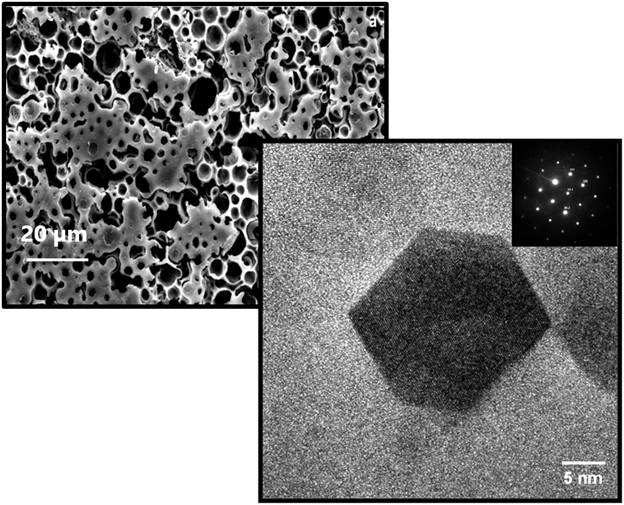Synthesis and fabrication of Sic-based ceramic nanocomposites foams with micro-meso-macroporosity
Within the planned program, single-source precursors (SSPs) for SiMC-based ceramic nanocomposites (M= Ni, Fe etc) will be synthesized and fabricate as ceramic foam. Ceramic foams are a class of industrial ceramic products, and have a wide range of applications due to their unique properties such as low density, low thermal conductivity and thermal shock resistance. Due to its unique properties it offers a varied number of applications in light weight structural materials, electrolysis, catalyst support, filtration, diffusion, separation and purification etc. In addition to the macroporous ceramic foam, the incorporation of micro and mesoporosity helps to increase the specific surface area which might in turn enhances the applicability of the ceramic. The development of nanocomposites ceramic foams instead of only ceramic foams helps to provide two or more primary functions, either in a simultaneous manner or sequentially. In this project, the nanocomposites ceramic will be synthesized by SSP route. As it overcomes the drawbacks of conventionally used methods (inhomogeneous distribution). In-situ generation of the different phases helps to improve the homogeneous dispersion of different phases with controlled size. The chemical modification of the silicon-based preceramic precursors (polycarbosilanes, polysiloxanes, or polysilazanes) with element-organic or organometallic compounds (metal alkoxides or metal amido complexes) leads to the synthesis of SSP. The obtained SSPs are subsequently converted into nanocomposites upon pyrolysis. Furthermore the obtained SSPs are easy to fabricate in desired shape and the porosity can be tailored. In order to incorporate the micro and mesoporosity in the monoliths, the C(O)-backbone containing SSPs will be synthesized, as controlled heat treatment of the C(O)-backbone containing macromolecular precursor at different temperatures leads to increases the porosity by the evolution of gaseous species.
Contact: Kaur, Wilhelm



